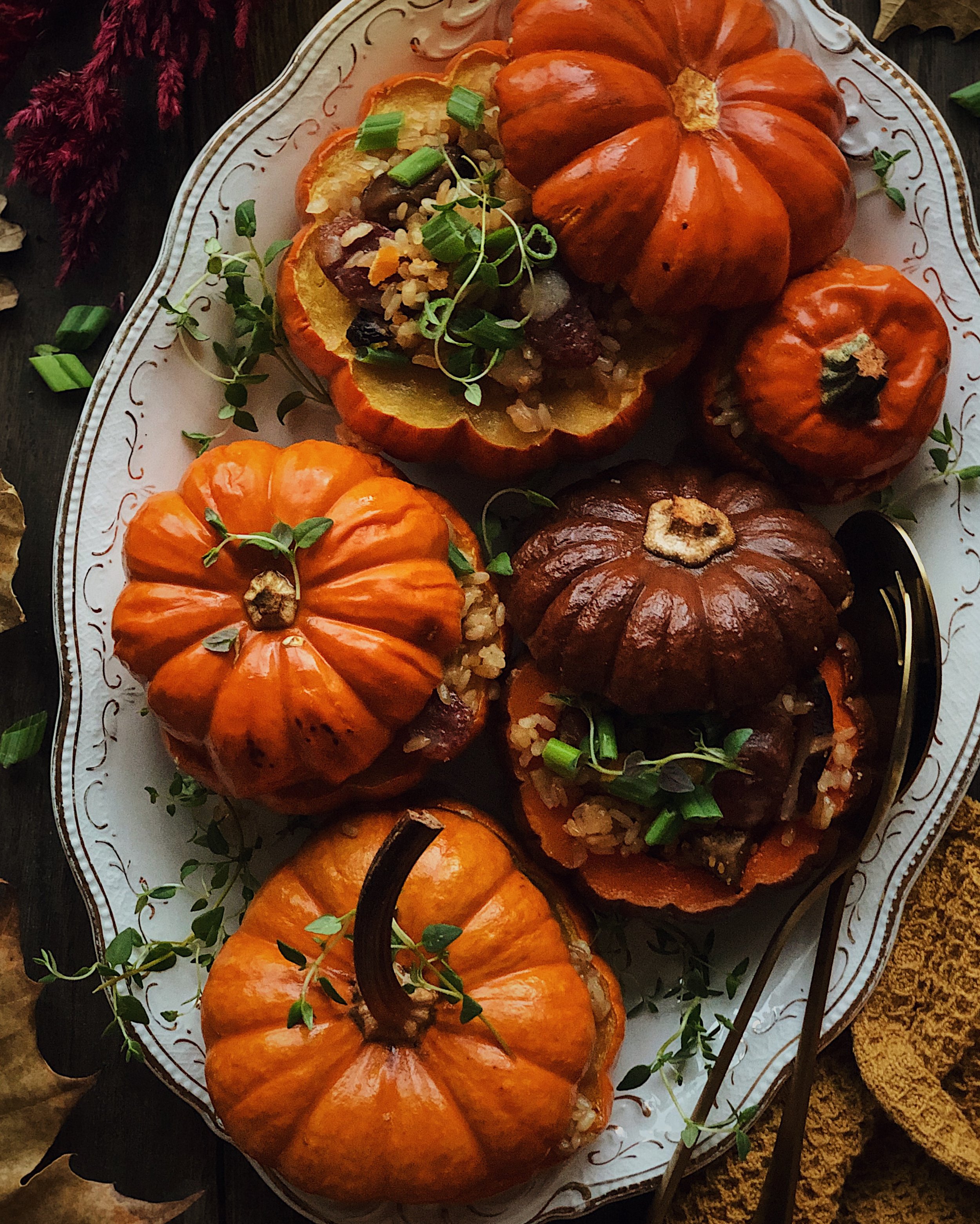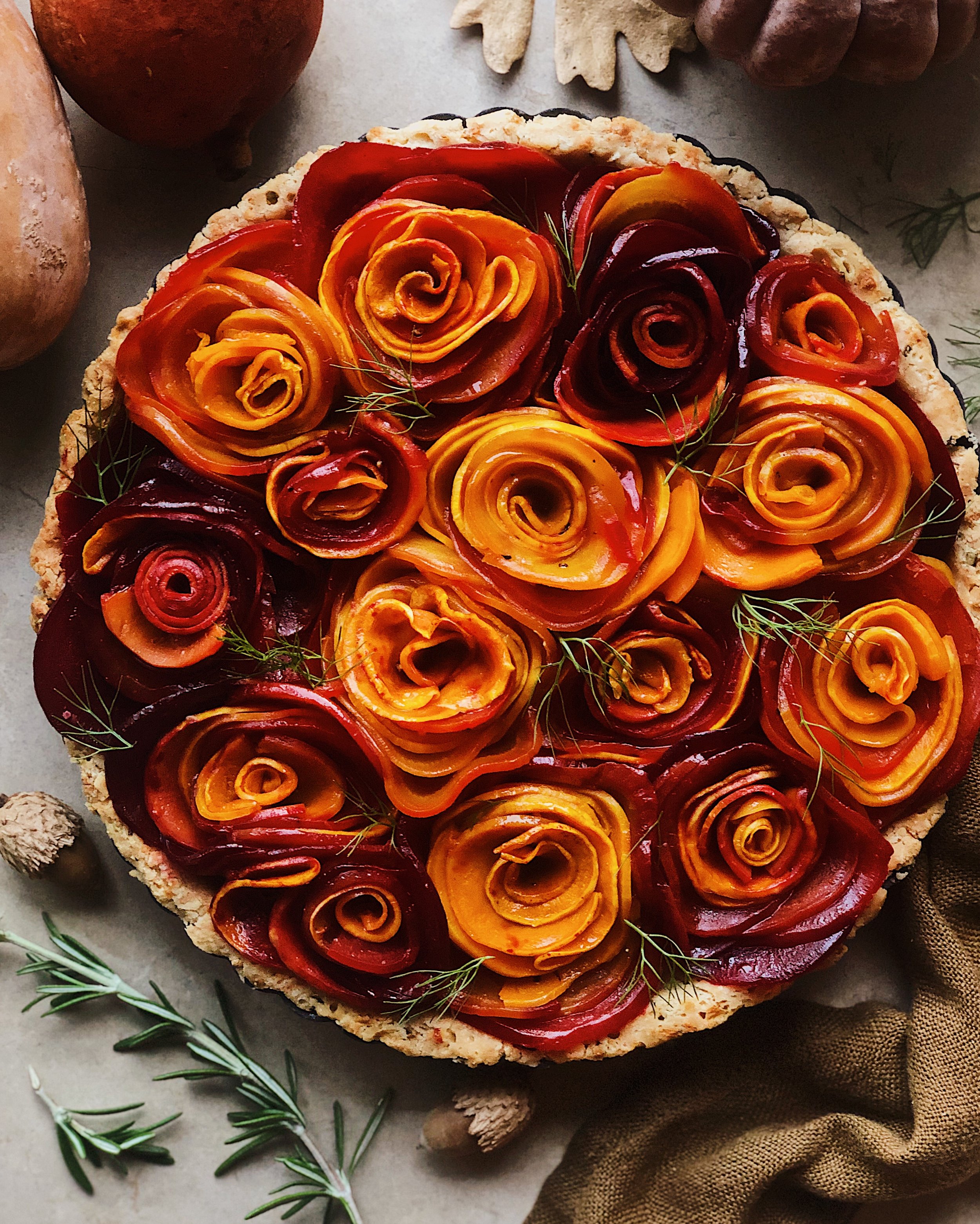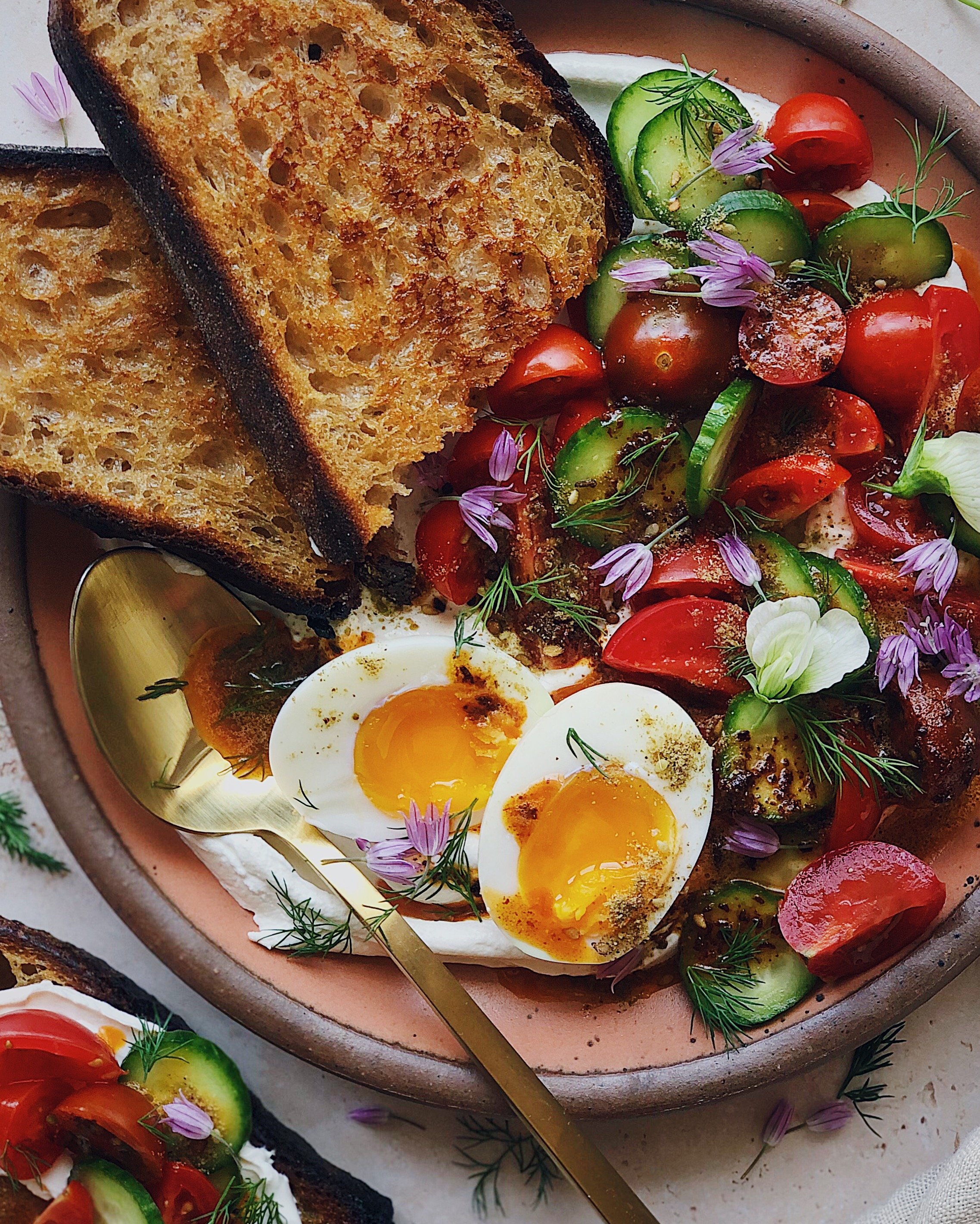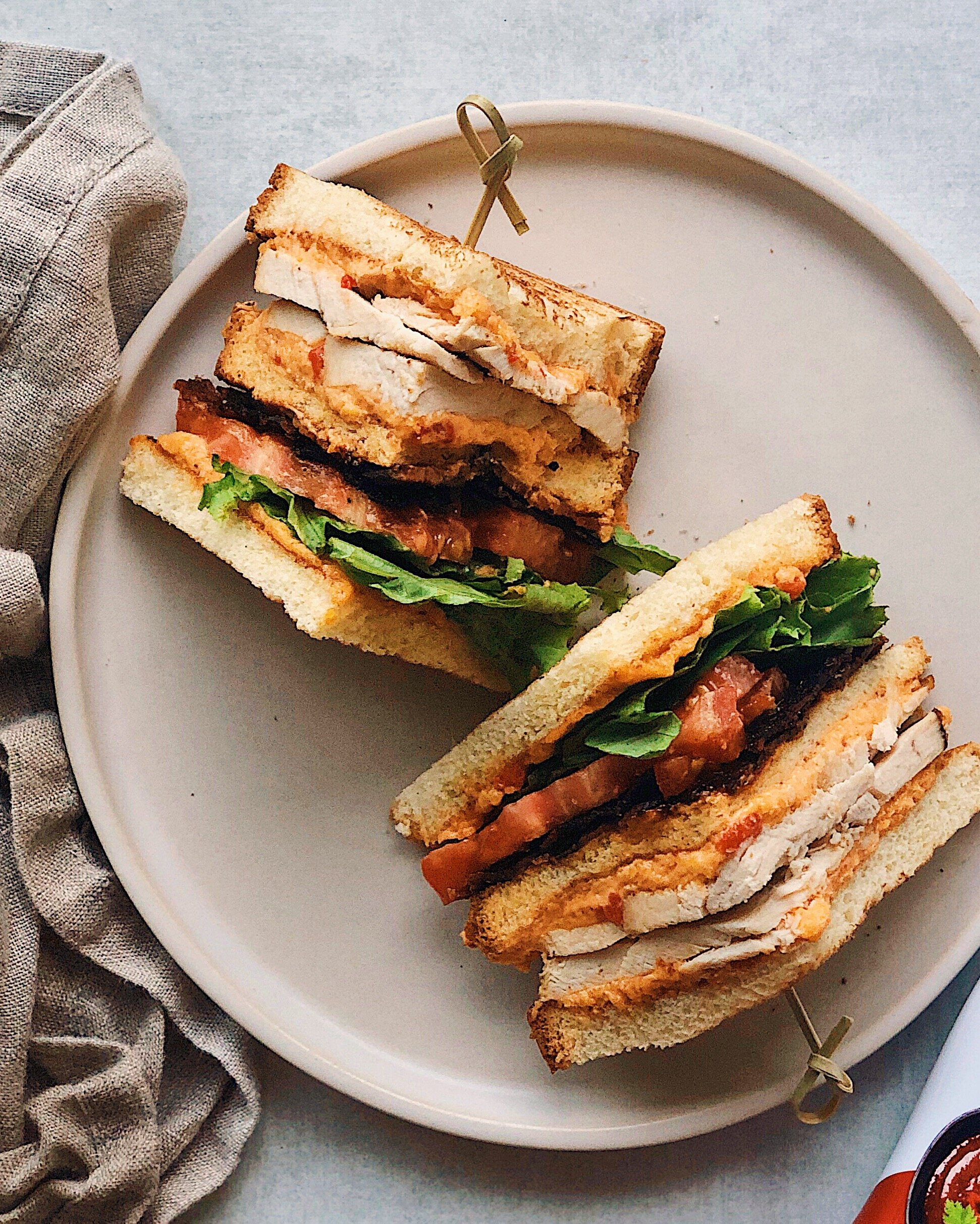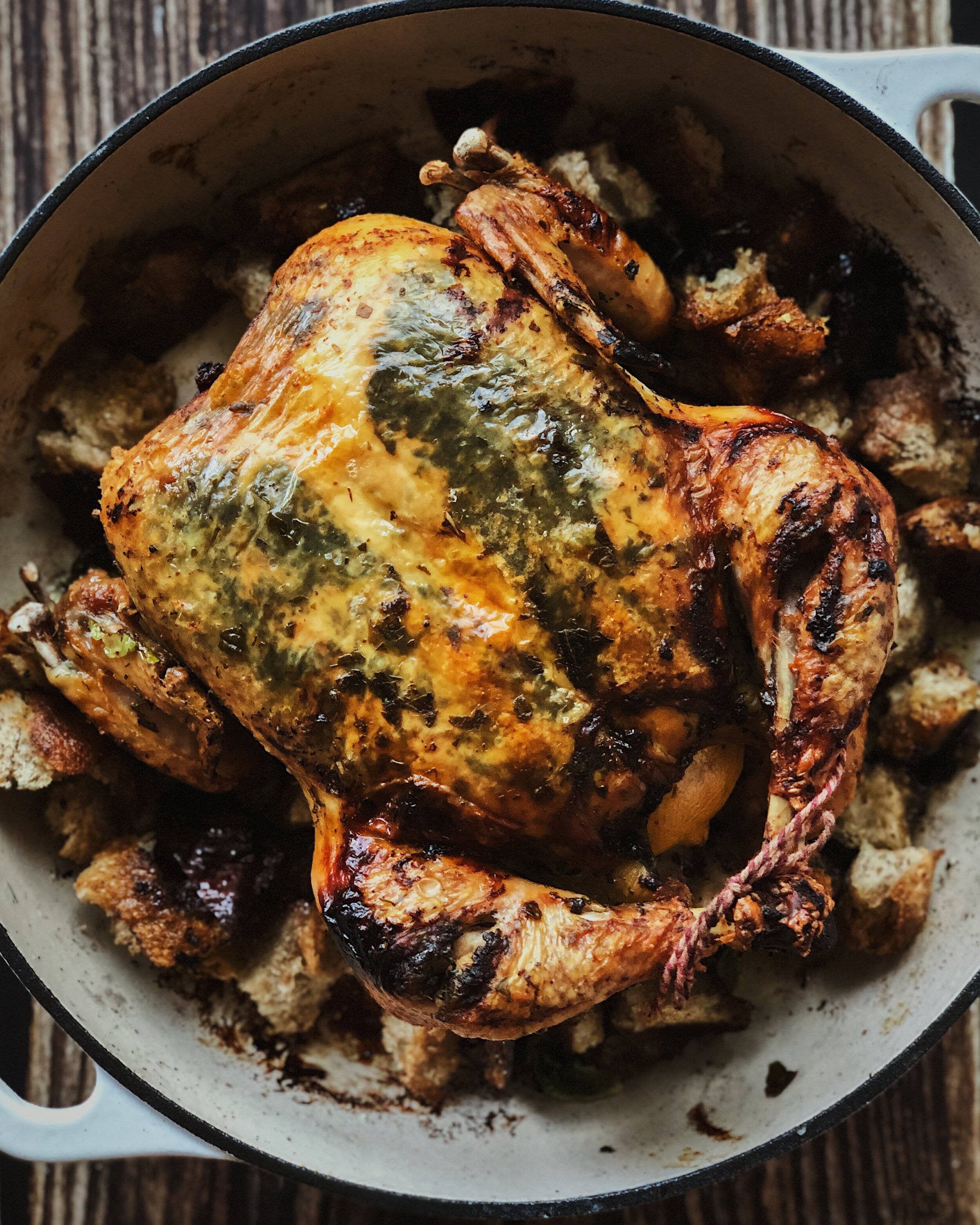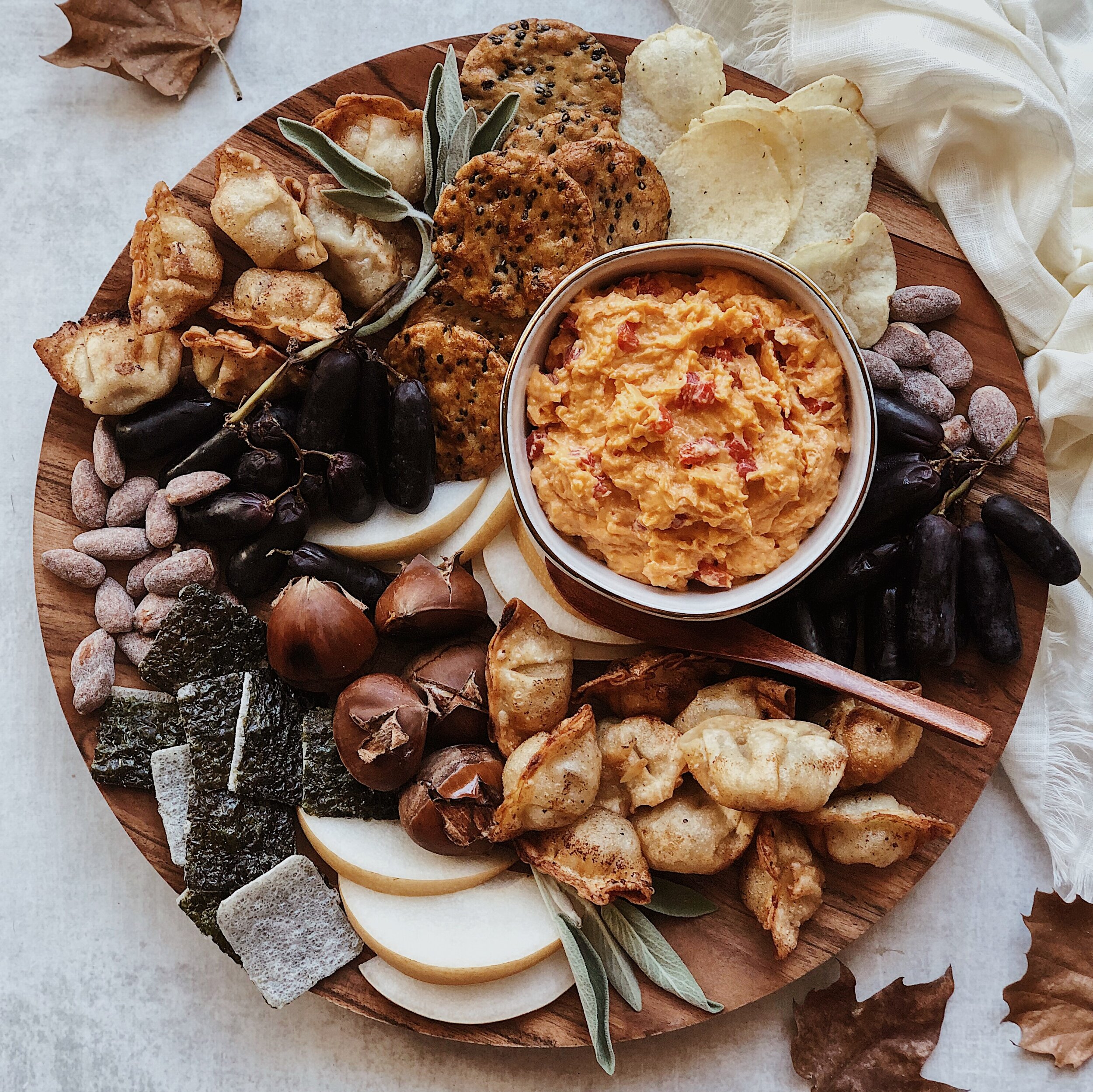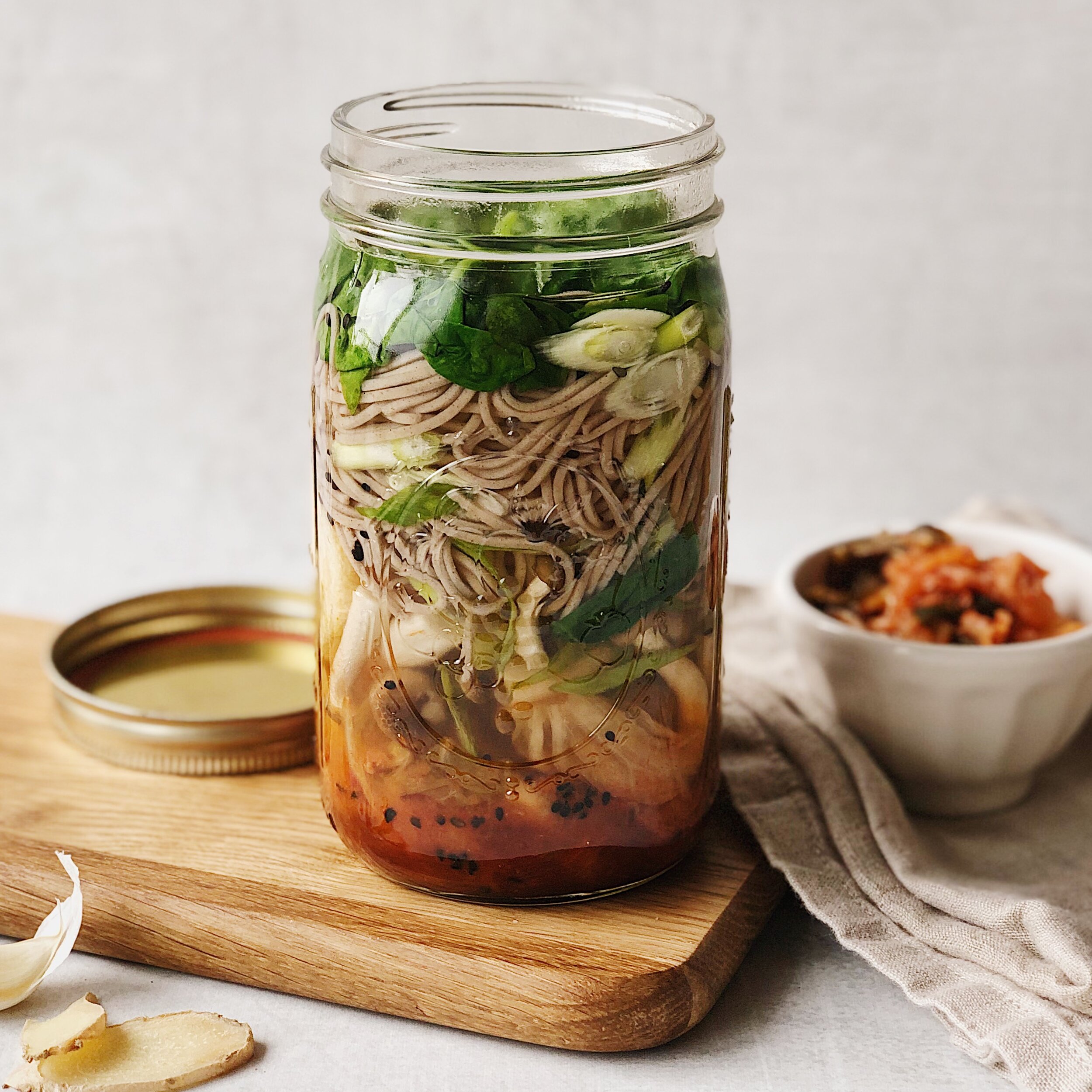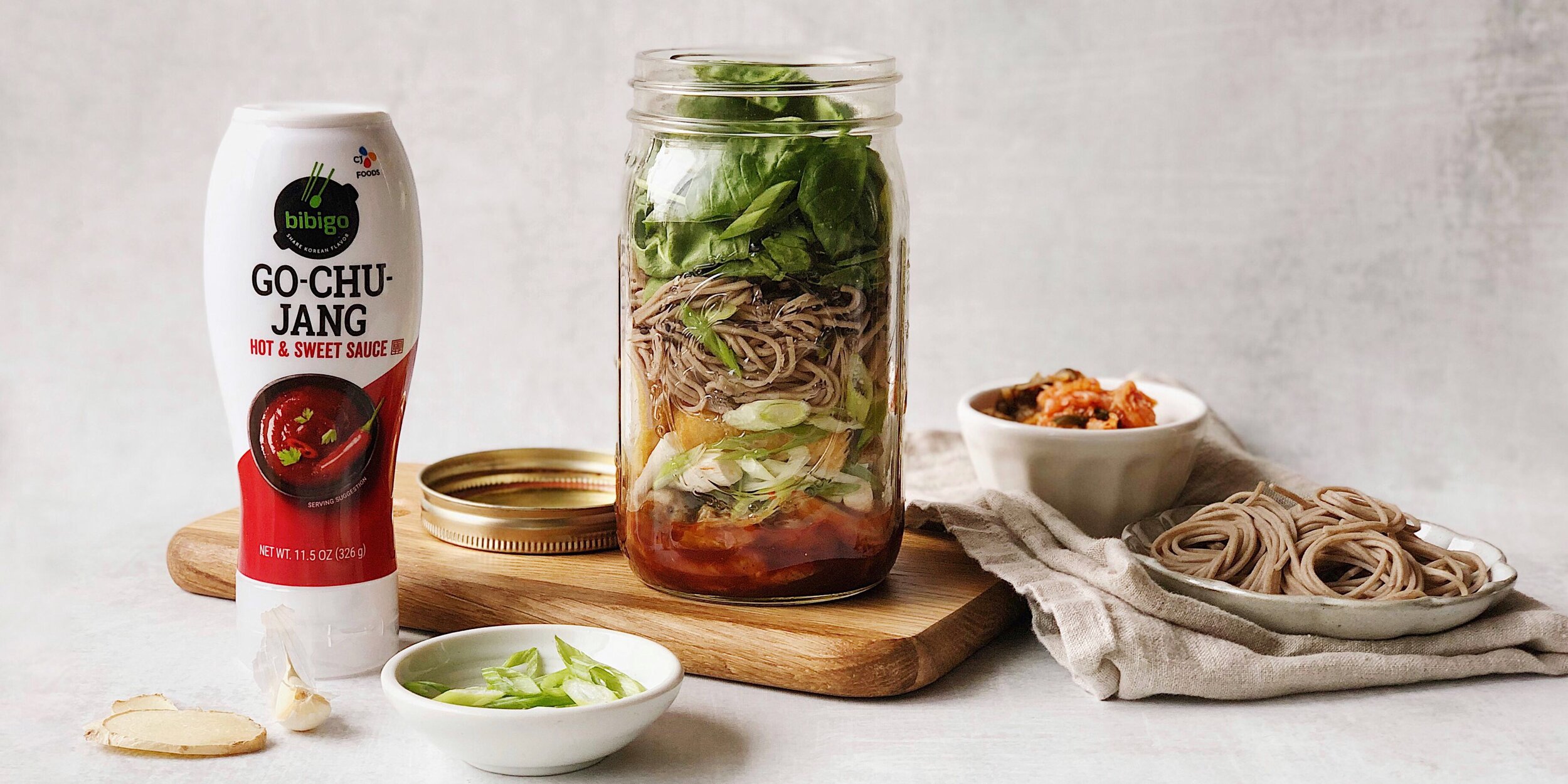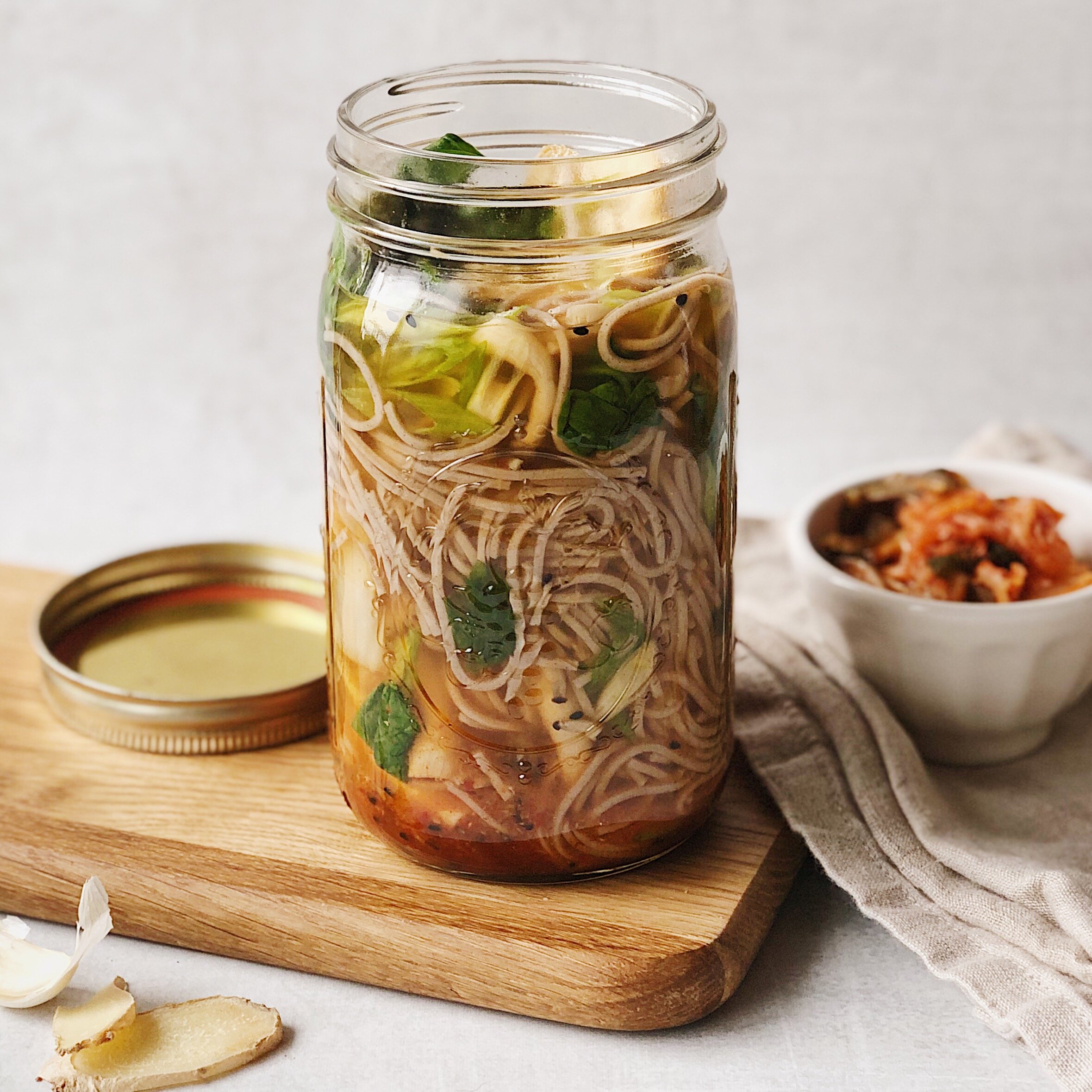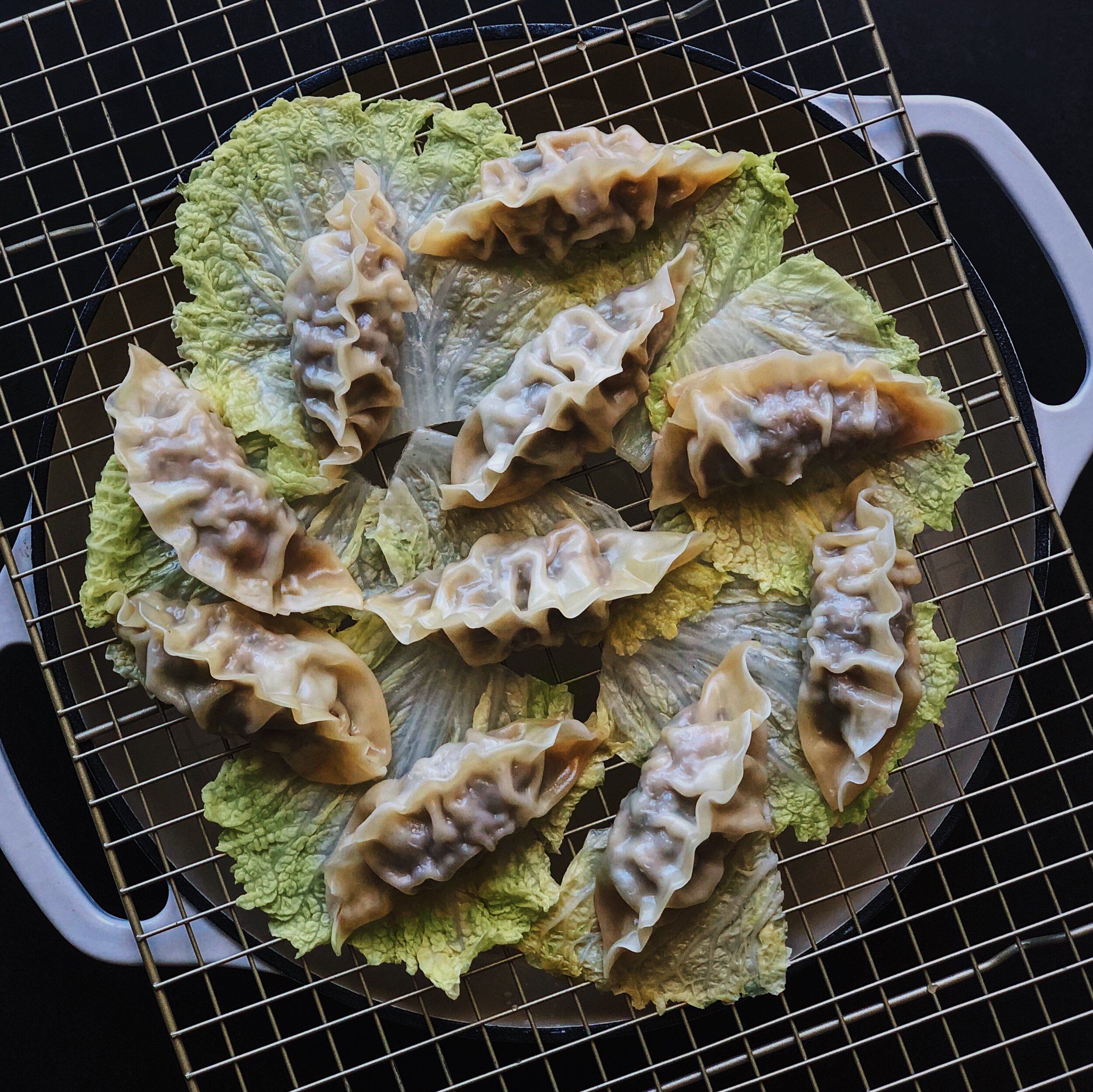Recipe: Spicy Almond Butter Cookies
/For this recipe, I partnered with Bibigo USA to use their Bibigo Hot & Sweet Go-Chu-Jang Sauce to make a giftable holiday treat. Cookies may be the classic homemade gift for the holidays but when working with savory Korean sauces and marinades, transforming them into cookies may not be the first idea that comes to mind. These cookies are pretty out there—but in my opinion, in a good way. If you’ve read my other blog posts, you will know by now that I am a diehard lover of savory over sweet, so I thought this would be a cool opportunity to develop a cookie recipe that teetered between the two taste realms.
When you look at Christmas cookies, spiced confections seem to be pretty rooted in the flavors of the season but this typically means cinnamon, nutmeg, and the like. Well, these cookies are spiced all right—as in spicy! Bibigo Hot & Sweet Go-Chu-Jang Sauce is a sweeter, lighter take on gochujang, a Korean red chili pepper paste. I was so pleased with how that flavor came across after getting baked into a cookie. These cookies are slightly sweet and a touch salty; instead of spicy kick, I’d describe the spice of these as a mellow burn. If you love gifting cookies but you’ve got someone in your life who is always looking for unusual spicy things, I hope you will consider giving this recipe a try.
This recipe was adapted from a recipe by Katiebird Bakes.
How to Make Spicy Almond Butter Cookies
(Makes about 15 cookies)
Ingredients
6 tablespoons unsalted butter
1/3 cup raw creamy almond butter, stirred
1/4 cup Bibigo Hot & Sweet Go-Chu-Jang Sauce
2/3 cup brown sugar, packed
1 egg
1 1/3 cups all purpose flour
1/2 tsp baking soda
1/2 tsp salt
Sparkling sugar, optional
Procedure
In a large mixing bowl, melt butter in the microwave for 30 seconds, and then for additional 10-second increments until completely melted. While butter is still hot, slowly drizzle in almond butter and Bibigo Hot & Sweet Go-Chu-Jang Sauce while whisking. Whisk together vigorously until completely homogenous.
Add brown sugar and egg to the mixing bowl and whisk mixture together until completely homogenous.
In a separate bowl, mix together flour, baking soda, and salt. Add dry ingredients gradually to wet ingredients, mixing together with a spoon or spatula until thoroughly combined and a firm dough is formed.
Roll dough into 1 1/2-inch balls and place 2 inches apart on a parchment lined baking sheet. Chill cookie dough balls in the refrigerator for 10 minutes.
Meanwhile, preheat oven to 350°F.
Use a fork to press a crosshatch pattern into the dough balls and slightly flatten them. Sprinkle sparkling sugar on top of each, if desired.
Bake for 9–10 minutes or until bottoms are browned. Remove from the oven and allow to set for 3 minutes before transferring to a rack to cool completely.
Thank you so much to Bibigo USA for sponsoring this recipe! For more recipe ideas and to learn more about their products, visit their website!









